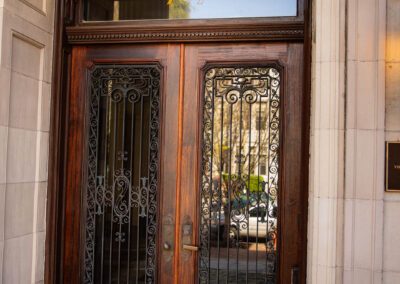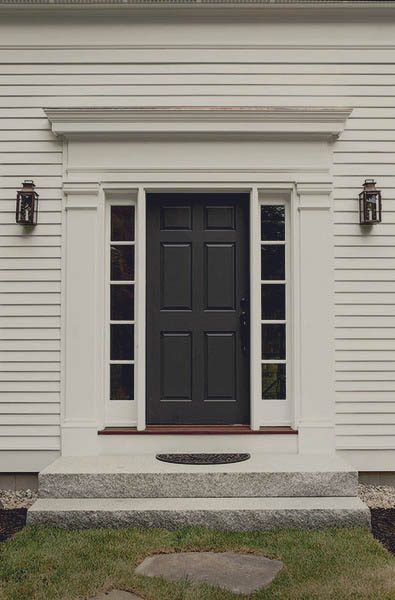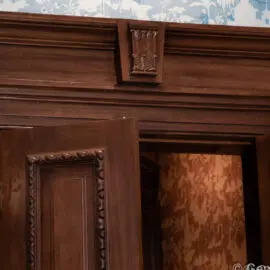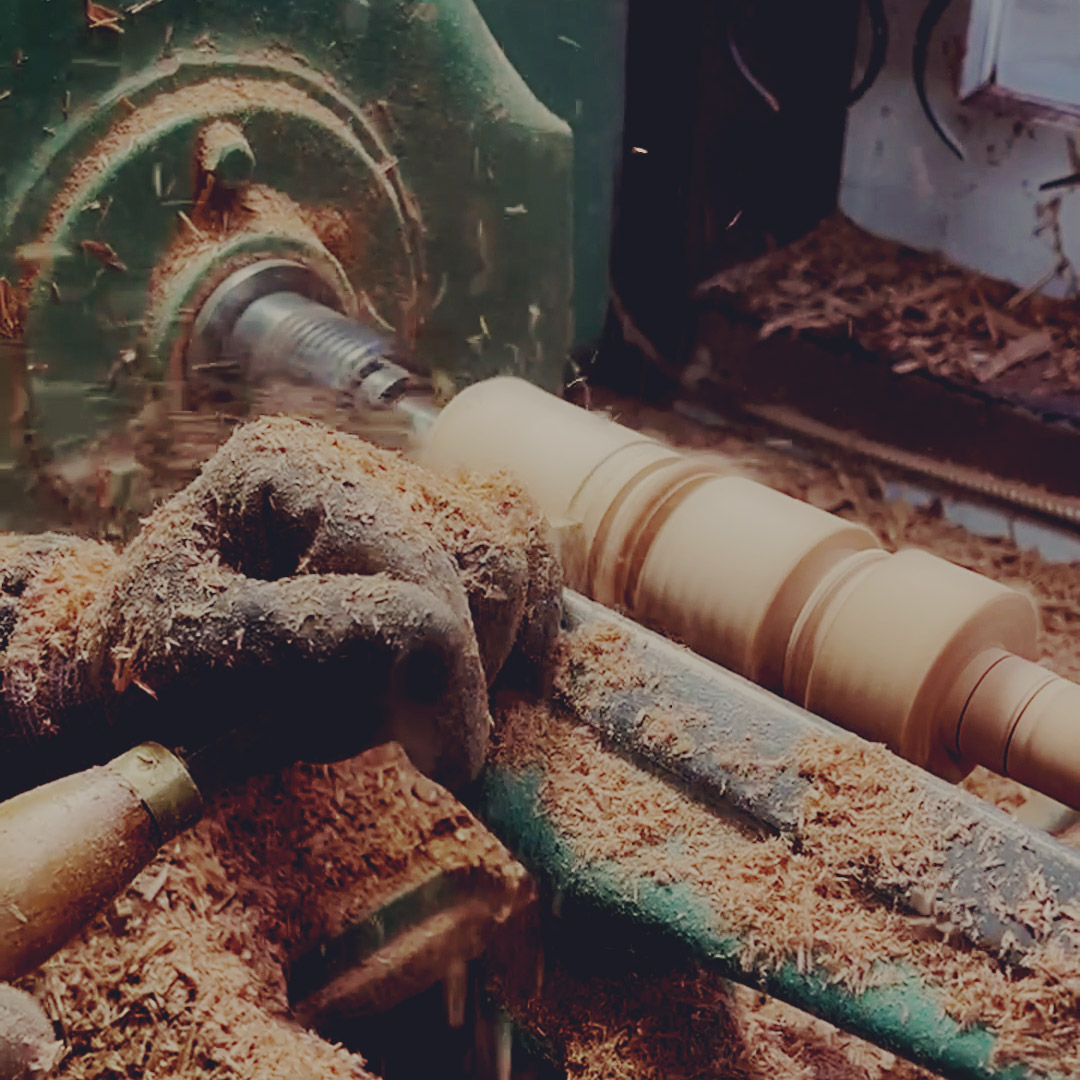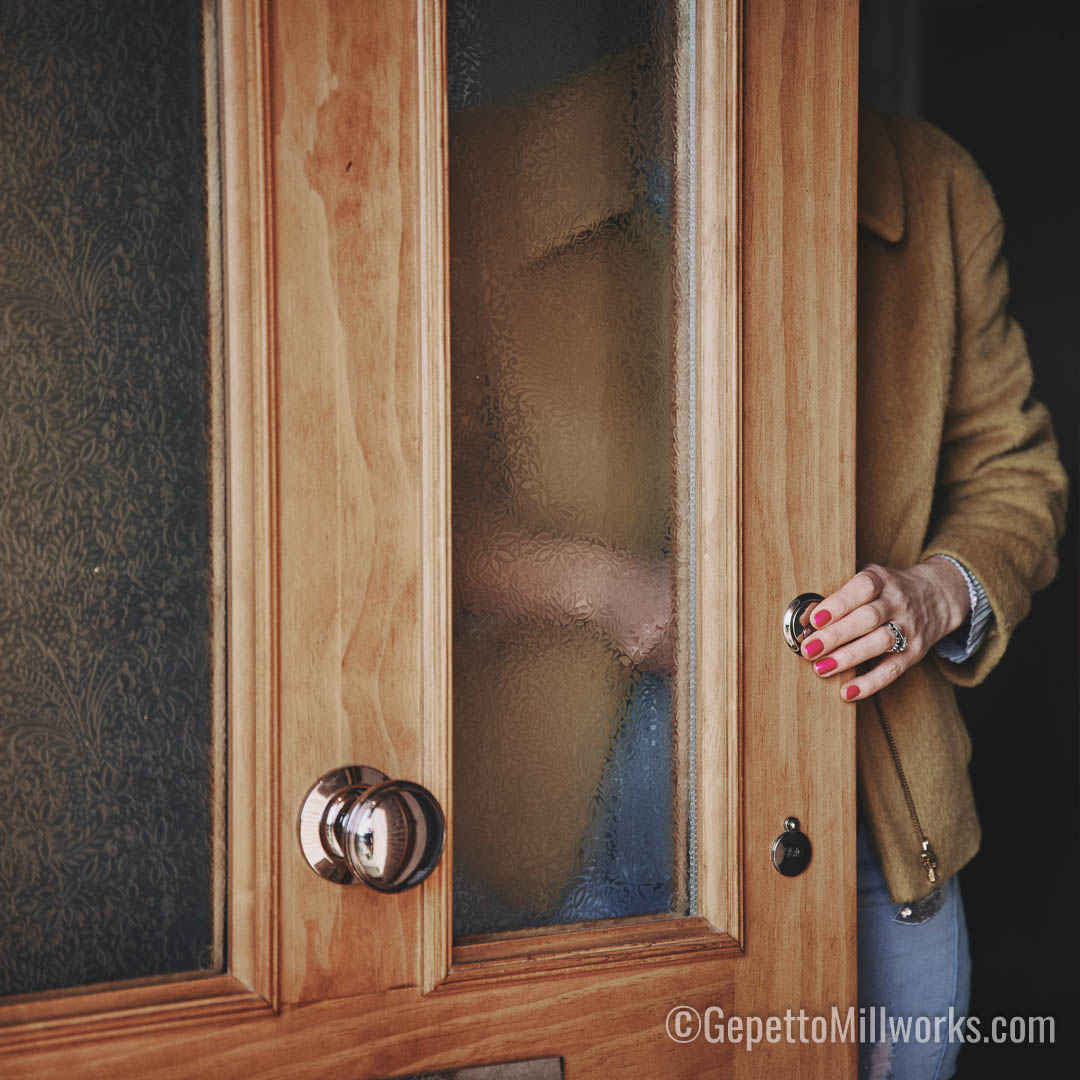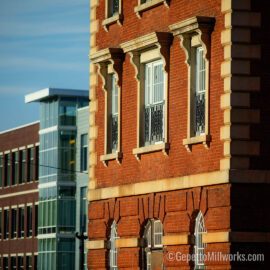Hello, I’m Matt Wiley, proprietor of Gepetto Millworks, and I’ve spent decades learning the nearly lost craft of wood turning by hand. It’s on the art side of craft that allows me to deliver accurate architectural restoration millwork to the historic buildings of the southeastern United States. Growing up in rural Virginia, I looked up to the magesty of the historic structures all around me and now I’ve helped restore homes and buildings from Georgia, South Carolina, North Carolina, Deleware, Maryland, Pennsylvania, New Jersey and New York. The warm strength of wood, the tactile surface, and its ability to carry history in it’s shaping on the lathe is a skill I’ve honed being taught by the old timers of the Richmond furniture making shops. Over the years, I’ve had the privilege of turning raw blanks into small works of art. I’m glad you’ve found my work as it’s a delicate balance to focuses on blending traditional techniques with modern needs for cost but as I have strong ties to the timber industry that supports my craft I can source all specieces of blanks to match your historic preservation needs. My timely management and whole shop production allows for seamless renovations staying on the building timeline you need while preserving the charm that makes these properties special.
Wood turning is one of the oldest woodworking techniques known to mankind, pieces dating back to ancient Egypt have been found showing the technique. “Wood Turning” as implied involves rotating a piece of wood on a lathe and shaping it with handheld tools and you can see in my videos that it’s as simple as it sounds.
The Essence of Wood Turning
As simply as it looks on the surface, wood turning involves an intricate dance between the wood, the lathe, and the artisan’s tools. There’s something rhythmic and meditative about the process, but it is frought with a bit of danger and plenty of pitfalls. When turning wood, I always start by selecting the right quality in the blanks themselves—each species has its own characteristics that either support being carved while spinning or make it more difficult leading to lost materials. Whether it’s dense oak, soft pine, or the more exotic woods like mahogany, the grain of the wood guides the final product. Once mounted on the lathe, I begin shaping the wood, using a variety of gouges, chisels, and parting tools. The process can allows for the patterns to emerge or a slip of the tool or inconsistency in the wood can shatter the whole piece forcing me to start over. Whether for something as simple as a spindle , decorative newel post or pedestal wood turning for one of a kind pieces can be done at my shop. Please call me and describe your project needs as spam emails are not the personal touch I provide in delivering these services. And if you’re currently being tempted by styrofoam reproductions, you’re right I can’t beat the cost – but give me a call and see what the ballpark figures are for authentic wood elements.
25 Uses of Wood-Turned Architectural Millwork
Over the years, I’ve used wood turning to produce an array of products that enhance the structural and aesthetic quality of buildings. Below are some of the most common uses, ranging from purely decorative to highly functional:
Balusters – Classic use for turned wood in interior and exterior staircase railings. In many federal style Virginia buildings you’ll see a Balustrade – which is just a horizontal set of turned columns supporting a rail over an awning or separating a section of the building.
Newel Posts – Often the focal point of a staircase, these posts set the tone for the look and feel of the staircase and support the hand rail.
Porch Columns – Particularly in Southern homes, large, turned columns are an iconic look and support front porches. You don’t need to settle for factory turned porch columns and could instead have us turn you something Craftsman inspired, or more Greek and Romanesque. The limit is only our ability to source or build a blank to suit your design.
Mantelpieces – A turned wood mantel adds elegance and serves as the centerpiece of a fireplace.
Table Legs – Custom turned legs provide durability and style to dining, coffee, and end tables.
Chair Legs and Spindles – From dining chairs to rocking chairs, turned legs and spindles provide both structural integrity and aesthetic charm.
Bed Posts – Turned bed posts offer a timeless elegance to bedroom furniture.
Cabinet Pulls – Hand-turned pulls offer a subtle but beautiful touch to custom cabinetry.
Crown Molding Accents – Adding turned elements to crown molding can enhance a room’s sophistication.
Ceiling Medallions – These decorative pieces, often placed around light fixtures, add a historical touch to any room.
Corbels – Used in both interior and exterior architecture, turned corbels add detail to shelves, mantels, and roofs.
Brackets – For supporting shelves or overhangs, turned wood brackets are both functional and ornamental.
Finials – Used to cap posts, these decorative features can be found on staircases, porch railings, and even bed frames.
Pillars – In large rooms or entryways, turned pillars serve both as load-bearing structures and elegant design elements.
Handrails – Smooth, custom-turned handrails offer both safety and style to staircases.
Wainscoting Caps – Adding a turned cap to wainscoting gives a polished finish to this classic wall treatment.
Window Sashes – Turned elements can be integrated into window sashes for historic home restorations.
Pedestals – Whether for tables or standalone, turned pedestals add elegance to any room.
Cupboard Columns – Used as decorative columns in kitchen cabinetry, they provide a traditional, high-end look.
Railing Posts – Turned posts add both stability and visual interest to deck and porch railings.
Bed Rails – The structural and decorative elements of turned bed rails provide a balanced combination of form and function.
Door Handles – Custom-turned handles bring a personal touch to doors and cabinets.
Pew Ends – In churches, turned pew ends provide a traditional and reverent design element.
Gate Posts – On exterior gates, these posts offer structural support and a decorative finish.
Lamp Stands – Custom-turned lamp bases can turn a basic fixture into a piece of art.
Spindle Turning:
This is one of the most common forms of wood turning used in architectural millwork. For elements like balusters, newel posts, and chair legs, the wood is held between two points and shaped as it spins on the lathe. This method allows for long, slender shapes with flowing curves or stepps to balance the designs.
Faceplate Turning:
This technique is used when creating wider, flatter pieces like table tops or medallions. The wood is mounted on a faceplate, and the turning happens primarily on one axis. This allows me to shape the wood’s face rather than its length.
Segmented Turning:
In segmented turning, multiple pieces of wood are glued together and turned as one piece. This technique allows for unique patterns and is often used in decorative applications like pedestals or lamp bases. Connect with me to discuss the options of mis-matching wood colors or stacking them to create unique designs or patterns in your final piece.
Hollow Form Turning:
For products like lamp bases or finials, where hollowing out the interior is necessary, I use hollow form turning techniques. It requires specialized tools to reach inside the wood without damaging the exterior.
Beading and Fluting:
Decorative elements like beads and flutes can be added to the surface of turned pieces to enhance their visual appeal. These are often found on chair spindles, bedposts, and other fine furniture.
Historic Preservation and Restoration
One of the most rewarding aspects of my work is helping to preserve historic homes throughout Virginia and the southeastern U.S. Many of these homes, dating back to the 18th and 19th centuries, feature architectural millwork that is no longer available through modern suppliers or ‘off the shelf’. Wood turning allows me to recreate these pieces with exacting detail, ensuring that the integrity of the original design is maintained.
In Virginia, I’ve worked on restoring homes in historic districts like Alexandria, Fredericksburg, Richmond and Staunton. These areas are rich with architectural heritage, and the woodwork in these homes is often a defining feature. Whether it’s replicating a centuries-old baluster or crafting a newel post that matches the original, the work requires both skill and historical knowledge that I am happy to apply to your project.
Further down the Southeast, cities like Charleston, SC, and Savannah, GA, present similar opportunities. These cities are famous for their well-preserved historic homes, and wood turning plays a key role in maintaining the authenticity of these properties. I’ve crafted turned wood columns and porch posts that mirror the original designs, ensuring that these homes retain their charm for generations to come. In Savannah, the blend of Victorian, Georgian, and Gothic Revival architecture creates a unique demand for custom millwork. I’ve worked on projects in this area that require recreating the ornate woodwork found in these homes, from porch columns to window sashes. While much of my work is rooted in Virginia, I’ve had the opportunity to expand my craft to other areas of the Southeast. The architectural diversity across this region means that no two projects are ever the same. In Charleston, for example, the influence of European architecture is more pronounced, which means that wood turning projects often involve intricate, decorative elements like turned balusters and staircases.
Wood Species and Their Roles in Architectural Millwork
Selecting the right species of wood is critical for any architectural millwork project. Different types of wood offer varying levels of durability, workability, and aesthetic appeal. Here are some of the species I frequently work with:
Oak: A strong, durable wood, oak is often used in load-bearing applications like columns and newel posts. Its distinctive grain pattern adds visual interest to any piece.
Pine: A softer wood, pine is easy to work with and is often used for decorative elements like balusters and wainscoting caps.
Mahogany: Known for its rich, dark color and fine grain, mahogany is a popular choice for high-end architectural millwork, particularly in historic home restoration.
Walnut: This hardwood has a deep, rich color that adds elegance to furniture and decorative millwork. It’s often used for mantelpieces and bedposts.
Maple: A dense wood with a smooth finish, maple is ideal for turning intricate details like beads and flutes.
Expanding the Craft Across the Southeast
Sapele, sapelli: Heartwood is a golden to dark reddish brown. Color tends to darken with age. Besides the common ribbon pattern seen on quartersawn boards, sapele is also known for a wide variety of other figured grain patterns, such as: pommele, quilted, mottled, wavy, beeswing, and fiddleback. Sapele can be troublesome to work in some machining operations, (i.e., planing, routing, etc.), resulting in tearout due to its interlocked grain. It will also react when put into direct contact with iron, becoming discolored and stained. Sapele has a slight blunting effect on cutters, but it turns, glues, and finishes well.
As always – call me direct for input on any project, or to discuss a longer run of turned wood historic millwork.
(804) 938-2094





